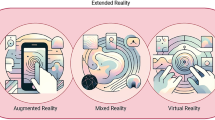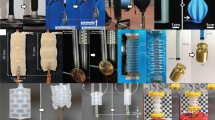Abstract
The insertion of needles into specific parts of the body was shown to provide analgesic and therapeutic effects. In this study, we tested the analgesic effects of high-intensity infrared laser for acupuncture-like stimulation. Twelve adult Sprague–Dawley rats weighing 230 to 250 g were randomly assigned to laser, needle, or restraint groups. Stimulation was directed to the meridian point Taixi (KI 3) for 10 min. For laser stimulation, a pulsed Er:YAG system was used. The laser settings were adjusted to provide a focal raise in the skin temperature to about 45°C. The anti-nociceptive effect was evaluated by the tail-flick test. Both needling and laser stimulation significantly increased the tail-flick latency. Peak needling effect was observed immediately after treatment, while laser stimulation was effective both immediately and 45 min after treatment. High-intensity laser stimulation may be used alternatively or in combination with conventional acupuncture needling for pain relief.


Similar content being viewed by others
References
Whittaker P (2004) Laser acupuncture: past, present, and future. Lasers Med Sci 19(2):69–80 DOI 10.1007/s10103-004-0296-8
Chen CJ, Yu HS (2003) Acupuncture, electrostimulation, and reflex therapy in dermatology. Dermatol Ther 16(2):87–92
Lee JD, Kim SY, Kim TW, Lee SH, Yang HI, Lee DI, Lee YH (2004) Anti-inflammatory effect of bee venom on type II collagen-induced arthritis. Am J Chin Med 32(3):361–367
Melzack R, Jeans ME, Stratford JG, Monks RC (1980) Ice massage and transcutaneous electrical stimulation: comparison of treatment for low-back pain. Pain 9(2):209–217
Peacher WG (1975) Adverse reactions, contraindications and complications of acupuncture and moxibustion. Am J Chin Med (Gard City N Y) 3(1):35–46
Toda K (1981) Changes of the jaw opening reflex activity by electroacupuncture stimulation in rat. Am J Chin Med 9(3):236–242
Trentini JF, 3rd, Thompson B, Erlichman JS (2005) The antinociceptive effect of acupressure in rats. Am J Chin Med 33(1):143–150
Dorfer L, Moser M, Bahr F, Spindler K, Egarter-Vigl E, Giullen S, Dohr G, Kenner T (1999) A medical report from the stone age? Lancet 354(9183):1023–1025
Unschuld PU (2003) Huang Di nei jing su wen. University of California Press, Berkeley
BCTCM (1980) Essentials of Chinese acupuncture. Foreign Languages Press, Beijing
Le Bars D, Dickenson AH, Besson JM (1979) Diffuse noxious inhibitory controls (DNIC). I. Effects on dorsal horn convergent neurones in the rat. Pain 6(3):283–304
Le Bars D, Dickenson AH, Besson JM (1979) Diffuse noxious inhibitory controls (DNIC). II. Lack of effect on non-convergent neurones, supraspinal involvement and theoretical implications. Pain 6(3):305–327
Toda K (2002) Afferent nerve characteristics during acupuncture stimulation. Int Congr Ser 1238(13):49–61
Langevin HM, Churchill DL, Fox JR, Badger GJ, Garra BS, Krag MH (2001) Biomechanical response to acupuncture needling in humans. J Appl Physiol 91(6):2471–2478
Chang HT (1986) Research on acupuncture, moxibustion, and acupuncture anesthesia. Science Press, Beijing
Cruccu G, Garcia-Larrea L (2004) Clinical utility of pain—laser evoked potentials. Suppl Clin Neurophysiol 57:101–110
Kakigi R, Inui K, Tamura Y (2005) Electrophysiological studies on human pain perception. Clin Neurophysiol 116(4):743–763 DOI 10.1016/j.clinph.2004.11.016
Plaghki L, Mouraux A (2005) EEG and laser stimulation as tools for pain research. Curr Opin Investig Drugs 6(1):58–64
Treede RD, Lorenz J, Baumgartner U (2003) Clinical usefulness of laser-evoked potentials. Neurophysiol Clin 33(6):303–314
Schlager A (1998) Korean hand acupuncture in the treatment of chronic hiccups. Am J Gastroenterol 93(11):2312–2313
Stellon A (2005) The use of laser acupuncture for the treatment of neurogenic pruritus in a child—a case history. Acupunct Med 23(1):31–33
Wozniak P, Stachowiak G, Pieta-Dolinska A, Oszukowski P (2003) Laser acupuncture and low-calorie diet during visceral obesity therapy after menopause. Acta Obstet Gynecol Scand 82(1):69–73
Radmayr C, Schlager A, Studen M, Bartsch G (2001) Prospective randomized trial using laser acupuncture versus desmopressin in the treatment of nocturnal enuresis. Eur Urol 40(2):201–205
Butkovic D, Toljan S, Matolic M, Kralik S, Radesic L (2005) Comparison of laser acupuncture and metoclopramide in PONV prevention in children. Paediatr Anaesth 15(1):37–40 DOI 10.1111/j.1460-9592.2004.01388.x
Whittaker P (2006) Laser acupuncture and analgesia: preliminary evidence for a transient and opioid-mediated effect. Proceedings of SPIE 6140:84–88 DOI 10.1117/12.648518
Le Bars D, Willer JC, De Broucker T (1992) Morphine blocks descending pain inhibitory controls in humans. Pain 48(1):13–20
Willer JC, De Broucker T, Le Bars D (1989) Encoding of nociceptive thermal stimuli by diffuse noxious inhibitory controls in humans. J Neurophysiol 62(5):1028–1038
Willer JC, Roby A, Le Bars D (1984) Psychophysical and electrophysiological approaches to the pain-relieving effects of heterotopic nociceptive stimuli. Brain 107 (Pt 4):1095–1112
Bodnar RJ, Kelly DD, Brutus M, Glusman M (1980) Stress-induced analgesia: neural and hormonal determinants. Neurosci Biobehav Rev 4(1):87–100
Acknowledgements
This study was presented in part at the 11th World Congress on Pain (Sydney, Australia), 2005. It was supported by a grant-in-aid for Scientific Research from JSPS (No. P05242). KMS is a JSPS postdoctoral fellow.
Author information
Authors and Affiliations
Corresponding author
Rights and permissions
About this article
Cite this article
Zeredo, J.L., Sasaki, K.M. & Toda, K. High-intensity laser for acupuncture-like stimulation. Lasers Med Sci 22, 37–41 (2007). https://doi.org/10.1007/s10103-006-0408-8
Received:
Revised:
Accepted:
Published:
Issue Date:
DOI: https://doi.org/10.1007/s10103-006-0408-8




